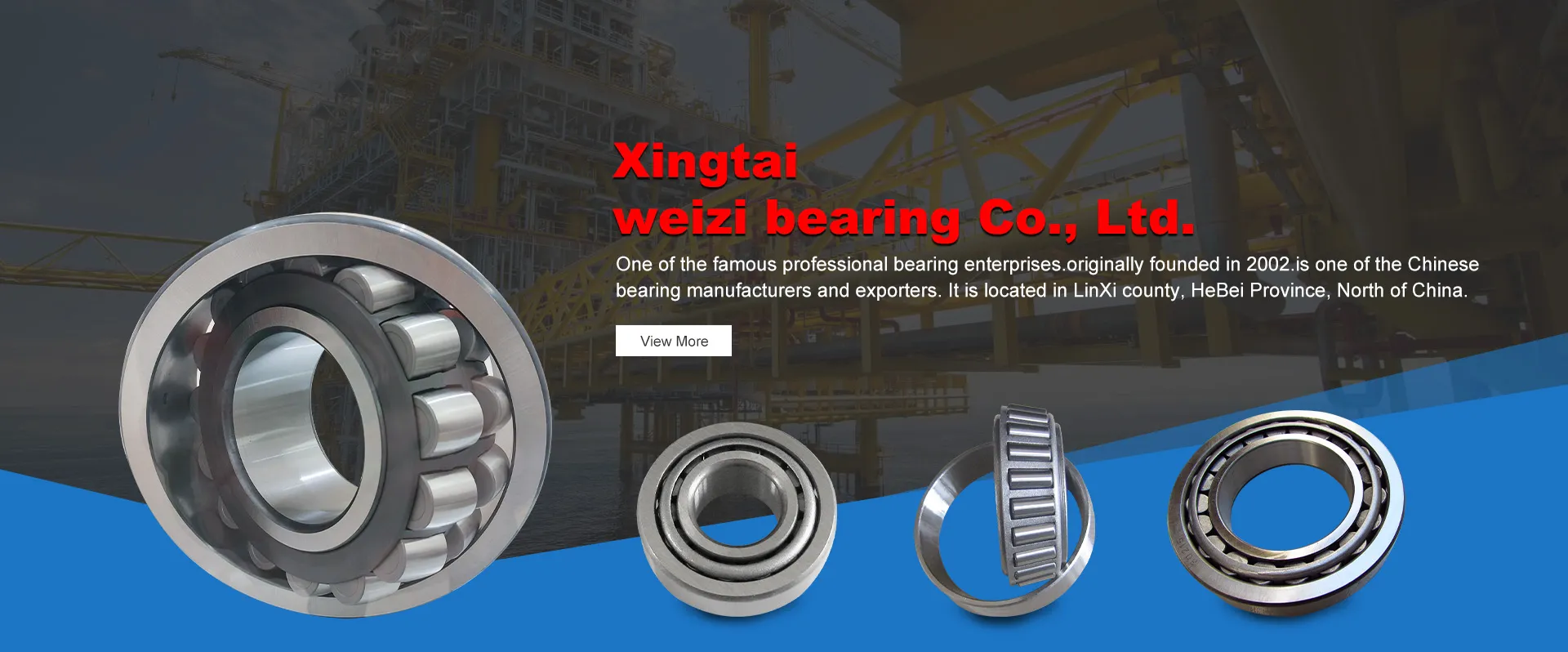
Aug . 10, 2024 16:50 Back to list
Comprehensive Guide to Roller Thrust Bearing Sizes and Specifications for Various Applications
Understanding Roller Thrust Bearing Size Charts
Roller thrust bearings are crucial components in various mechanical systems, facilitating rotational movement while bearing axial loads. These bearings are designed to support heavy loads while rotating at high speeds, making them essential in applications such as turbines, gear sets, and heavy machinery. Selecting the right size for a roller thrust bearing is vital for performance, durability, and efficiency, which is where a bearing size chart becomes indispensable.
What Is a Roller Thrust Bearing?
A roller thrust bearing is a type of bearing that utilizes cylindrical rollers instead of balls to support axial loads. The unique design allows for higher load capacities compared to ball thrust bearings. Roller thrust bearings are often used in applications where the axial load is significant and space constraints limit the bearing diameter. They provide low friction and are capable of handling high speeds, making them suitable for machinery in industries like aerospace, automotive, and manufacturing.
Importance of Size Charts
The roller thrust bearing size chart serves as a comprehensive guide to selecting the proper bearing for a specific application. These charts provide critical dimensions such as the outer diameter, inner diameter, width, and roller diameter, along with load ratings. Understanding these specifications ensures that the chosen bearing will fit within the mechanical assembly and will withstand the required loads.
Key Parameters in Size Charts
1. Inner Diameter (ID) This is the diameter of the bore of the bearing and must match the shaft diameter on which the bearing will be mounted. A proper fit is essential to avoid slippage or excessive wear.
2. Outer Diameter (OD) The diameter of the outer race of the bearing. It determines how the bearing fits into its housing. A larger OD generally allows for higher load capacity but also affects overall design constraints.
roller thrust bearing size chart

3. Width (W) The width of the bearing affects its load ratings and the amount of axial space required in the assembly. Bearings with greater width can support more load but require more axial space.
4. Roller Diameter (r) The size of the rollers impacts the bearing's stiffness and load capacity. Larger rollers can bear more substantial loads but may also increase friction.
5. Load Ratings Bearing size charts typically include dynamic and static load ratings. These ratings indicate the maximum loads the bearing can withstand while rotating and while stationary, respectively.
6. Speed Ratings The chart may also provide maximum speed ratings, which is essential for applications with high rotational speeds. Understanding these ratings is crucial to avoid premature failure.
Selecting the Right Bearing
When selecting a roller thrust bearing, consider the specific application requirements, including load, speed, and space constraints. Always cross-reference the load requirements with the manufacturer's bearing size chart to ensure compatibility. It's also essential to account for environmental conditions; factors like temperature, humidity, and exposure to contaminants can influence bearing performance and lifespan.
Conclusion
Understanding the roller thrust bearing size chart is critical for engineers and technicians involved in the design and maintenance of machinery. By properly utilizing these charts, one can select the most suitable bearing for their application, ensuring optimal performance and longevity. In the realm of engineering, the right choice of bearing can significantly enhance the efficiency and reliability of mechanical systems, ultimately contributing to greater productivity and reduced operational costs. Whether you are designing a new piece of equipment or maintaining existing machinery, a thorough understanding of roller thrust bearings and their specifications is essential for success.
Latest news
-
Common Failures in Thrust Ball Bearings and Solutions
NewsAug.22,2025
-
How Tapered Roller Bearings Can Take Shock Loads
NewsAug.22,2025
-
Angular Bearings in High-Precision Spindles
NewsAug.22,2025
-
The Impact of Misalignment on Cylindrical Roller Bearing Performance
NewsAug.22,2025
-
The Role of Cage Design in Deep Groove Ball Bearing Durability
NewsAug.22,2025
-
The Impact of Material Quality on Machinery Bearings’ Lifespan
NewsAug.22,2025
